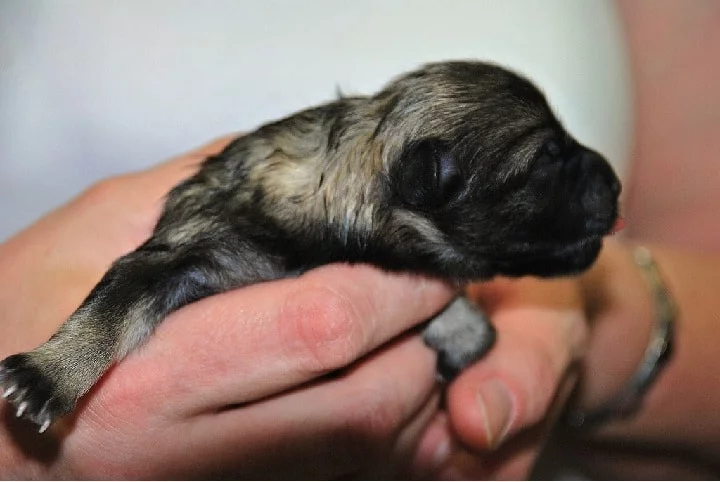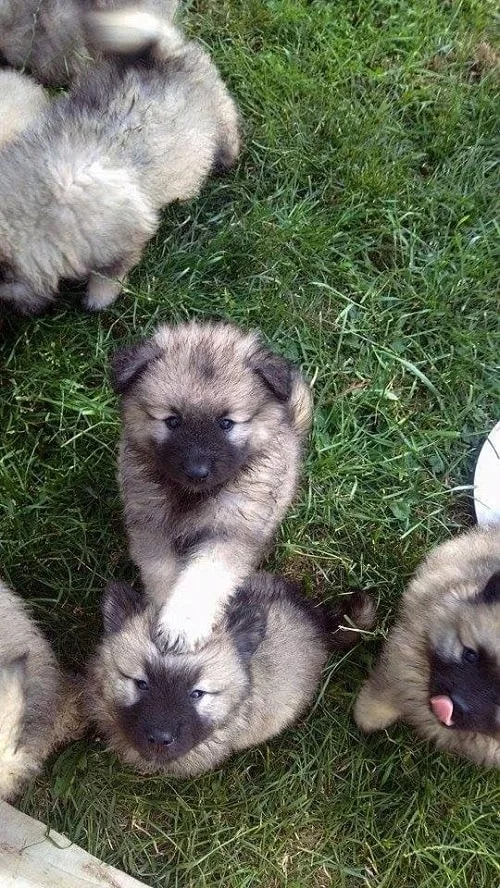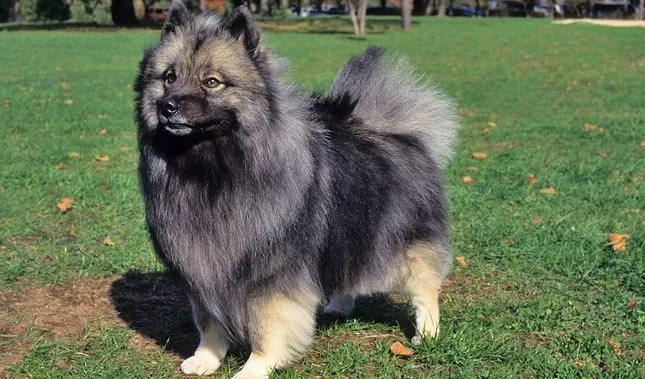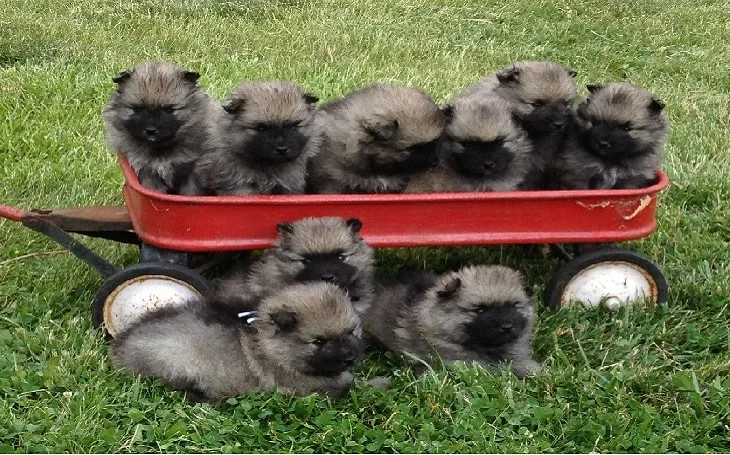Keeshond Puppies
Keeshond is a Spitz-type, medium-sized dog which is originated in Holland. They were bred to be a watchdog, guard dog and to be a family companion. It is active, friendly and outgoing nature dog.
Keeshond gives birth to 3-8 puppies at a time. The average cost of the Keeshond puppy is between $800-$1000. The development stage of these puppies is a very interesting topic which is briefly explained below.
Stage 1: Newborn
The newly born Keeshond weighs around two hundred and fifty grams only. They are very tiny that it will fit on the palm of the hand. When a Keeshond is born, they are completely blind, deaf and toothless at the first 2 weeks.
The birth color will change as they grow up. The Keeshond puppies at this stage, fully depend on the mother and the mother will keep them warm. As soon as the puppies are born, the bitch will lick and clean the body of her puppies

Image Source: Flickr
Stage 2: Neonatal (0-2 weeks)
A neonatal stage is a period that is followed by the birth of the puppies. The Keeshond puppy will depend on their sense of touch and smell at the first two weeks when they are not able to hear or see in this stage too. They follow the scent of their mother’s breast and crawl towards it.
The first milk of the mother produces colostrum which is very rich in antibodies. This milk protects Keeshond from any kind of fatal diseases. During this period, they should not be separated from the mother as the cold might
Keeshond puppies need a lot of sleep at the first two weeks for them to grow and developed properly. They will sleep almost 90 percent of the time. If they get proper sleep and food from their mother, Keeshond puppies birth size will double in the first week.
Stage 3: Transitional (2-4 weeks)
The 2-4 weeks of Keeshond puppies bring a great change in their life. The ears will open after the second weeks and the sealed eyes will open after 10 or 16 days. They begin to learn what their mother and siblings look and sound like. They form their own vocabulary and try to communicate by whining, yelping or barking.
Keeshond puppies will start to crawl around and their coat starts to grow a little. At the age of 4 weeks, Keeshond puppies develop small teeth. Their tails will stand up curving towards the back and their ears start to rise up. They begin to play with their siblings and learn about their canine world and environment.
Stage 4: Socialization (4-8 weeks)
Keeshond will grow at this period of time reaching up to 9 inches tall. They look like a fur ball at this age. They become playful with high energy and get along with the human being at 6-8 weeks.
This is the perfect time to socialize your Keeshond puppy to a variety of people. They should be taught to get along with people but also know their behavior and they should be taught not to accept every person as their family members. At this age, they should also be taught to walk around on a leash.

Image Source: Pinterest
Stage 5: Juvenile (3-6 months)
At 3 months, Keeshond puppy’s fur will be gone and it will be replaced with the adult coat. The puppies are more energetic and curious at this age, which is a perfect time for them to teach some basic commands.
Take them out to park on a leash and teach them basic commands like sit, come, stop etc. They soak up things easily at this time. Keeshond can be stubborn and it becomes hard to keep them focused. The owner should have patience and they should treat them gently. Harsh treatment will scare them and they will be a scared adult as they grow up.
Stage 6: Adolescent (6 months-1 year)
Keeshond may not be emotionally matured at this age but they are developed physically and reach their adulthood between the age of 6-12 months. They had already learned the basic commands and are ready for advanced training at this stage. Their growth does not stop at 1 year and they will still grow till 18 months.

Image Source: vetstreet.com
Visit Doglime for more information about puppies development stages, dog breeds history, training, behavior, and temperament.
Tags










